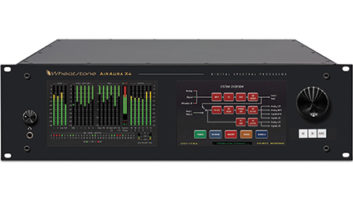The FCC to date has granted more than 1,200 low-power FM applications from the recent filing window, and dismissed hundreds of others.
Audio Division officials gave commissioners an update on LPFM processing at today’s open meeting. The agency received 2,826 applications for new LPFMs since the window closed Oct. 15, 2013. That compares to 3,250 applications filed in the 2000-2001 time-frame.
Audio Division Deputy Chief of Engineering Jim Bradshaw told RW the agency hopes to have the tougher cases, the disputed applications, sorted out by year-end.
Overall, the commissioners lauded the bureau’s efforts on LPFM, with Commissioner Jessica Rosenworcel calling the expanded service “the little engine that could.” (Read the text of her statement below.)
Commissioner Ajit Pai said the FCC worked much faster in granting 1,200 CPs in six months compared to the four years it took the agency to process that many applications in the first LPFM window.
Pai said he hopes the agency will bring the same speed to the AM revitalization effort. He called on his colleagues to act by October on six proposals contained in the Notice of Proposed Rulemaking. Asked by Radio World if the commission might move on some ideas sooner than others — specifically the proposed window to allow AM owners to apply for FM translators — Pai said they’d probably need to work on all of them at the same time.
Chairman Tom Wheeler was effusive in his praise for the quickness of the bureau’s work on processing the LPFM applications. Asked by Radio World if Pai’s timeable for AM seems doable, he said the FCC is“working with all expeditious speed. I think the bureau done an amazing job to get through the translator applications and then through the LPFM applications. That shows the level of management and intensity that’s being brought to this issue.”
The bureau worked through thousands of FM translator applications before focusing on LPFM.
Here is the text of the statement by Commissioner Jessica Rosenworcel:
“The history of low-power FM radio has a lot in common with a familiar tale. That’s because the story of low-power FM is the story of ‘The Little Engine That Could.’ It begins at the turn of the millennium. In 2000, the Commission first authorized the creation of low-power FM stations to provide noncommercial, educational, and local groups with the opportunity to provide a community-based radio service. But that same year, Congress passed legislation delaying the removal of third-adjacent channel separation requirements and requiring the agency to study interference issues just a little more. That might sound like a small thing. But it had big impact, limiting the agency’s ability to issue licenses for community broadcasting, especially in urban areas. So the low-power FM locomotive was stopped in its tracks with tough terrain ahead.
“But a stalwart group of legislators fought to change the law. Senator Cantwell, Senator McCain, Representative Doyle, and Representative Terry banded together and developed legislation to change those restrictive adjacent channel requirements and make it possible for low-power FM stations to be heard everywhere. So, over the course of not one, not two, but three successive Congresses, the Local Community Radio Act was introduced, introduced again, and introduced again. The third try was the charm. I know, because I spent quite a bit of my time as staff on the Senate Commerce Committee helping get this legislation over hills and signed into law.
“So, as the story goes, hard work and optimism has its rewards. The bipartisan group of legislators who disregarded the naysayers and thought they could do more with low power FM— actually did. I think it was worth the effort. Because there is something special about a voice in the air. One that rises above the din and provides local radio with unique character. And in these days of exploding global online content, there is still great value and art in community broadcasting.
“With more low-power FM, we are going to hear more of that local character. Just this week, I got the privilege to speak to KWEM in West Memphis, a new station with an historic call sign that is bringing rockabilly and blues back to its home along the Mississippi River. I also spoke to KPYT in Tucson, which serves the Pascau Yaqui tribe and provides programming that sustains its unique language, traditions, and culture. So low-power FM possibilities are powerful—and at long last, the legal framework for its expansion is in place. I, for one, can’t wait to hear this little engine roar.”









